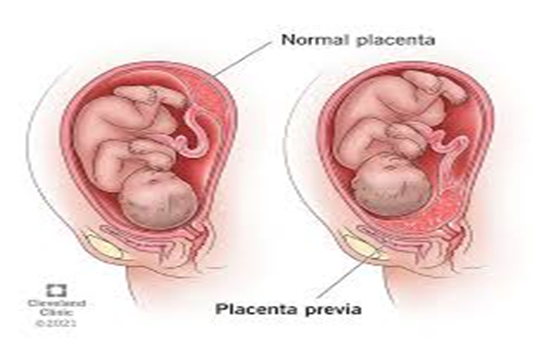A nurse is caring for a newborn delivered by vaginal birth with vacuum assist. The newborn's mother asks about the swollen area on her son's head. After palpation to identify that the swelling crosses the suture line, which of the following is an appropriate response by the nurse?
Mongolian spots can be found on the skin of many newborns.
Caput succedaneum occurs due to compression of blood vessels.
This is erythema toxicum, which is a transient condition.
This is a cephalohematoma, which can occur spontaneously.
The Correct Answer is B
Choice a reason:
Mongolian spots are a type of pigmented birthmark commonly found in newborns, often appearing as blue or grayish areas on the skin. They are not related to swelling and do not result from vacuum-assisted deliveries. Mongolian spots are usually located on the buttocks or lower back and are not associated with the type of swelling described by the mother.
Choice b reason:
Caput succedaneum is a condition where the newborn's scalp swells due to pressure during delivery. It is characterized by a soft, spongy mass that crosses suture lines and is most apparent on the part of the skull that was first to enter the birth canal. This condition is common in vacuum-assisted deliveries and is the correct explanation for the swelling observed on the newborn's head.
Choice c reason:
Erythema toxicum is a common and benign skin condition in newborns, presenting as red patches or small, fluid-filled bumps. It is not related to the swelling described and does not result from vacuum-assisted deliveries. Erythema toxicum typically resolves on its own and does not cause the type of swelling that crosses suture lines.
Choice d reason:
Cephalohematoma is a collection of blood between a newborn's scalp and the skull bone that results from ruptured blood vessels, which can be a result of birth trauma or pressure. However, it is typically confined to one area and does not cross suture lines. Since the swelling described by the mother crosses the suture lines, cephalohematoma is less likely to be the correct diagnosis.
Nursing Test Bank
Naxlex Comprehensive Predictor Exams
Related Questions
Correct Answer is ["A","C","D","E"]
Explanation
Choice a reason:
Washing the perineal area using a squeeze bottle of warm water after each voiding is a recommended practice to reduce the risk of infection. This method gently cleanses without causing irritation and ensures that any bacteria are washed away, which is particularly important after a vaginal delivery when the perineal tissue may be more susceptible to infection.
Choice b reason:
Applying ice packs to the perineal area several times daily can help reduce swelling and provide pain relief, but it is not directly related to reducing the risk of infection. Ice packs should be used as part of pain management and swelling reduction rather than for hygiene purposes.
Choice c reason:
Blotting the perineal area dry after cleansing is important to maintain the integrity of the skin and prevent moisture buildup, which can create an environment conducive to bacterial growth. Patting the area dry gently can help prevent irritation and reduce the risk of infection.
Choice d reason:
Cleaning the perineal area from front to back is a critical practice to prevent the spread of bacteria from the anal area to the vagina and urethra, which can cause urinary tract infections. This technique is especially important postpartum when the perineal area is healing.
Choice e reason:
Performing hand hygiene before and after voiding is a fundamental practice to prevent the introduction of pathogens to the perineal area and reduce the risk of infection. Proper handwashing can significantly decrease the likelihood of perineal infections by ensuring that the hands are clean when they come into contact with sensitive areas.
Correct Answer is C
Explanation
Choice a reason:
While there is always a risk of introducing infection with an internal examination, this is not the primary concern with placenta previa. Infections are a risk with any invasive procedure, but the precautions taken during a typical internal examination minimize this risk.
Choice b reason:
Initiating preterm labor is a concern with any manipulation of the cervix or uterus during pregnancy. However, at 37 weeks, the pregnancy is considered early-term, and the risk of preterm labor is not the primary concern in the context of placenta previa.
Choice c reason:
The primary reason for avoiding an internal examination in a client with placenta previa is the risk of profound bleeding. With placenta previa, the placenta covers part or all of the cervix. An internal examination could disturb the placenta and lead to significant hemorrhage, which can be life-threatening for both the mother and the fetus.
Choice d reason:
While there is a risk of rupturing the membranes during an internal examination, this is not the primary concern with placenta previa. The main issue is the potential for causing significant bleeding due to the placenta's location over the cervix.

Whether you are a student looking to ace your exams or a practicing nurse seeking to enhance your expertise , our nursing education contents will empower you with the confidence and competence to make a difference in the lives of patients and become a respected leader in the healthcare field.
Visit Naxlex, invest in your future and unlock endless possibilities with our unparalleled nursing education contents today
Report Wrong Answer on the Current Question
Do you disagree with the answer? If yes, what is your expected answer? Explain.
Kindly be descriptive with the issue you are facing.
